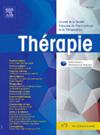Intérêt d’une séance éducative « flash » coordonnée par des pharmaciens d’officine pour des patients âgés diabétiques de type 2 en milieu rural
IF 2.2
4区 医学
Q3 PHARMACOLOGY & PHARMACY
引用次数: 0
Abstract
Les pharmacies d’officine représentent un service de proximité, idéal pour un accès à l’éducation thérapeutique en milieu rural. Les personnes âgées, peu mobiles, diabétiques de type 2, sont de plus en plus nombreuses et nécessitent un accompagnement éducatif relatif à leur pathologie. L’objectif de ce travail était de mettre en place une intervention éducative courte, dite « flash », coordonnée par des pharmaciens d’officine et de l’évaluer à Issoudun dans l’Indre, ville rurale française d’environ 10 000 habitants. Une fois les priorités éducatives établies, le projet a été présenté aux diverses instances de santé ainsi qu’aux professionnels de santé locaux. Les officines d’Issoudun ont recruté les patients accompagnés ou non d’un aidant. L’intervention éducative de 2 h portait sur 4 objectifs pédagogiques : connaître le diabète, ses complications et leur surveillance, comment réagir face à une hypoglycémie, comprendre ses traitements et l’hémoglobine glyquée. L’impact de la séance éducative a été évalué par un questionnaire de connaissances avant la réunion, après et à 6 mois. Quarante-cinq patients de 71 ± 6 ans avec 14 ± 6 ans de diabète ont été recrutés sur 6 mois. De fausses croyances ont été mises en évidence avant l’intervention. La séance a permis une amélioration significative du taux de bonnes réponses (avant : 60,3 % ± 7,5, après : 99 % ± 0,4, p = 0,0002) et à 6 mois (99,5 % ± 0,3, p = 0,0002) par rapport à l’état des connaissances initiales des participants. Les fausses croyances ont été rectifiées en quasi-totalité par l’intervention et les participants ont su replacer le mécanisme d’action de leur médicament à l’aide d’un schéma « clé-serrure ». Ce modèle d’intervention éducative « flash » coordonnée par les pharmaciens d’officine a démontré son efficacité et son intérêt auprès des patients. Il pourrait être étendu à d’autres communes rurales et déserts médicaux.
The number of elderly people with type 2 diabetes (T2D) is increasing worldwide. Community pharmacies, thanks to their proximity, provide more easy access to therapeutic education for rural patients. Populations living in isolated areas require specific educational resources related to their condition. The aim of this project was to perform a short (FLASH) educational intervention, coordinated by community pharmacists, and then evaluate the impact of this intervention on patient knowledge of their disease. The study was performed in Issoudun, a rural French town of approximately 10,000 inhabitants. Educational priorities were defined and the project was presented to health authorities and local health professionals. Pharmacies in Issoudun recruited patients, either alone or accompanied by their caregivers. The educational intervention lasted 2 h and focused on 4 teaching objectives: knowledge concerning diabetes, diabetic complications and how to monitor them; how to react to hypoglycemia; understanding treatments; and understanding glycated hemoglobin. The impact of this educational intervention was assessed using a questionnaire delivered before the intervention, immediately after, and after 6 months. Forty-five patients aged 71 ± 6 years with T2D duration of 14 ± 6 years were recruited over 6 months. Some false beliefs were identified before the intervention. The educational session led to a significant improvement in the percentage of correct answers (before: 60.3% ± 7.5, after: 99% ± 0.4, P = 0.0002) and at 6 months (99.5% ± 0.3, P = 0.0002) compared with the patients’ initial knowledge. Almost all false beliefs were corrected by the intervention and patients were able to recall the mechanism of action of their drugs, with the help of a “key and lock” schematic. This short FLASH educational intervention, coordinated by community pharmacists, showed that the model was both interesting to patients and effective. This method could be expanded to other rural communities and medical deserts.
由配药师协调的 "快闪 "教育课程对农村地区老年 2 型糖尿病患者的价值
药店提供本地服务,是农村地区提供治疗教育的理想选择。越来越多的老年 2 型糖尿病患者行动不便,他们需要与病情相关的教育支持。该项目旨在建立一个由配药药剂师负责协调的名为 "快闪 "的短期教育干预措施,并在约有 10,000 人口的法国乡村小镇 Indre 省 Issoudun 对其进行评估。在确定了教育重点后,该项目被提交给了各卫生部门和当地的卫生专业人员。伊苏敦的药店招募患者,患者可以有或没有护理人员陪同。2 小时的教育课程主要围绕 4 个教育目标展开:了解糖尿病、糖尿病并发症及如何监测并发症、如何应对低血糖、了解治疗方法和糖化血红蛋白。教育课前后和 6 个月时,通过知识问卷对教育课的影响进行了评估。在 6 个月的时间里,共招募了 45 名年龄为 71±6 岁、糖尿病病史为 14±6 年的患者。在进行干预之前,患者的错误观念已被识别。与参与者最初的知识水平相比,干预后的正确率明显提高(干预前:60.3% ± 7.5,干预后:99% ± 0.4,p = 0.0002),6 个月后的正确率也明显提高(99.5% ± 0.3,p = 0.0002)。干预措施纠正了几乎所有错误观念,参与者能够使用 "钥匙锁 "图解释药物的作用机制。这种由配药药剂师协调的 "快闪 "教育干预模式证明了其有效性和对患者的吸引力。全世界患有 2 型糖尿病(T2D)的老年人越来越多。社区药房由于距离较近,为农村患者提供了更便捷的治疗教育途径。生活在偏远地区的人群需要与其病情相关的特定教育资源。该项目的目的是在社区药剂师的协调下,开展一项简短的(FLASH)教育干预,然后评估该干预对患者疾病知识的影响。研究在伊苏敦(Issoudun)进行,这是一个约有 10,000 名居民的法国农村小镇。确定了教育重点,并向卫生部门和当地卫生专业人员介绍了该项目。伊苏敦的药店招募了单独或由护理人员陪同的患者。教育干预持续了 2 个小时,主要围绕 4 个教学目标展开:糖尿病知识、糖尿病并发症及如何监测并发症;如何应对低血糖;了解治疗方法;了解糖化血红蛋白。通过在干预前、干预后和 6 个月后发放调查问卷,评估了这一教育干预措施的效果。在 6 个月的时间里,共招募了 45 名年龄为 71 ± 6 岁、患 T2D 病程为 14 ± 6 年的患者。干预前发现了一些错误信念。与患者的初始知识相比,教育课程显著提高了正确答案的百分比(干预前:60.3% ± 7.5,干预后:99% ± 0.4,P = 0.0002),并在 6 个月后显著提高了正确答案的百分比(99.5% ± 0.3,P = 0.0002)。干预措施纠正了几乎所有错误观念,患者能够在 "钥匙和锁 "示意图的帮助下回忆起药物的作用机制。在社区药剂师的协调下,这一简短的 "FLASH "教育干预表明,患者对这一模式既感兴趣又有效。这种方法可以推广到其他农村社区和医疗沙漠。
本文章由计算机程序翻译,如有差异,请以英文原文为准。
求助全文
约1分钟内获得全文
求助全文
来源期刊

Therapie
医学-药学
CiteScore
3.50
自引率
7.70%
发文量
132
审稿时长
57 days
期刊介绍:
Thérapie is a peer-reviewed journal devoted to Clinical Pharmacology, Therapeutics, Pharmacokinetics, Pharmacovigilance, Addictovigilance, Social Pharmacology, Pharmacoepidemiology, Pharmacoeconomics and Evidence-Based-Medicine. Thérapie publishes in French or in English original articles, general reviews, letters to the editor reporting original findings, correspondence relating to articles or letters published in the Journal, short articles, editorials on up-to-date topics, Pharmacovigilance or Addictovigilance reports that follow the French "guidelines" concerning good practice in pharmacovigilance publications. The journal also publishes thematic issues on topical subject.
The journal is indexed in the main international data bases and notably in: Biosis Previews/Biological Abstracts, Embase/Excerpta Medica, Medline/Index Medicus, Science Citation Index.
 求助内容:
求助内容: 应助结果提醒方式:
应助结果提醒方式:


